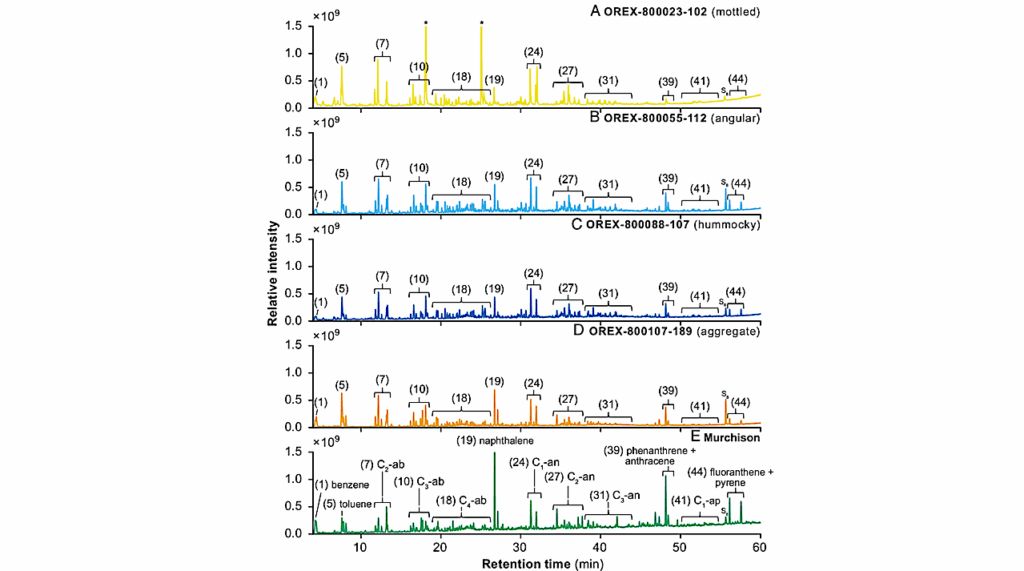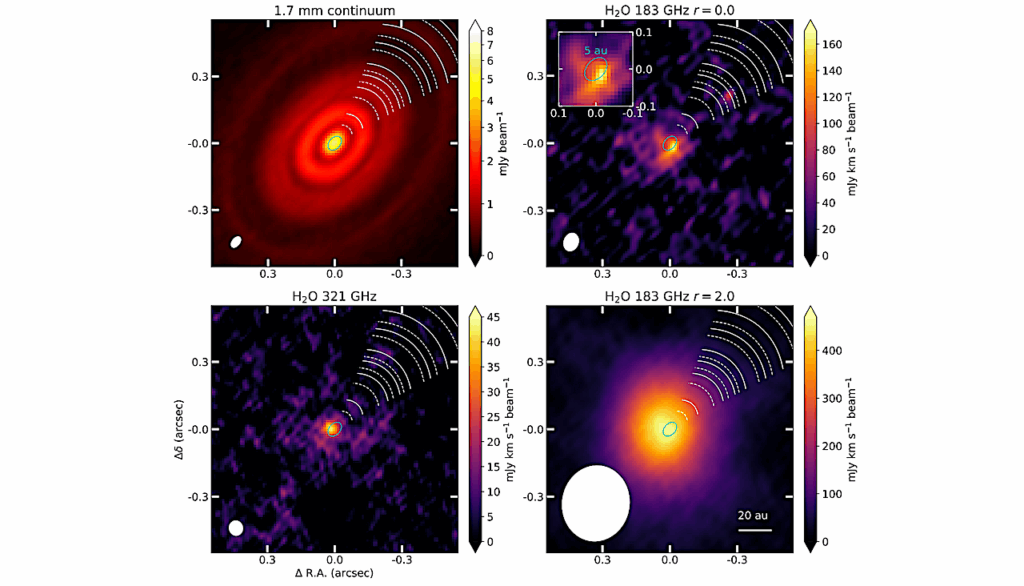Water In The Terrestrial planet-forming Zone Of The PDS 70 Disk

Terrestrial and sub-Neptune planets are expected to form in the inner (<10 AU) regions of protoplanetary disks.
Water plays a key role in their formation, although it is yet unclear whether water molecules are formed in-situ or transported from the outer disk. So far Spitzer Space Telescope observations have only provided water luminosity upper limits for dust-depleted inner disks, similar to PDS 70, the first system with direct confirmation of protoplanet presence. Here we report JWST observations of PDS 70, a benchmark target to search for water in a disk hosting a large (∼54 AU) planet-carved gap separating an inner and outer disk. Our findings show water in the inner disk of PDS 70. This implies that potential terrestrial planets forming therein have access to a water reservoir.
The column densities of water vapour suggest in-situ formation via a reaction sequence involving O, H2, and/or OH, and survival through water self-shielding. This is also supported by the presence of CO2 emission, another molecule sensitive to UV photodissociation. Dust shielding, and replenishment of both gas and small dust from the outer disk, may also play a role in sustaining the water reservoir. Our observations also reveal a strong variability of the mid-infrared spectral energy distribution, pointing to a change of inner disk geometry.
G. Perotti, V. Christiaens, Th. Henning, B. Tabone, L. B. F. M. Waters, I. Kamp, G. Olofsson, S. L. Grant, D. Gasman, J. Bouwman, M. Samland, R. Franceschi, E.F. van Dishoeck, K. Schwarz, M. Güdel, P.-O.Lagage, T.P. Ray, B. Vandenbussche, A. Abergel, O. Absil, A. M. Arabhavi, I. Argyriou, D. Barrado, A. Boccaletti, A. Caratti o Garatti, V. Geers, A. M. Glauser, K. Justannont, F. Lahuis, M. Mueller, C. Nehmé, E. Pantin, S. Scheithauer, C. Waelkens, R. Guadarrama, H. Jang, J. Kanwar, M. Morales-Calderón, N. Pawellek, D. Rodgers-Lee, J. Schreiber, L. Colina, T. R. Greve, G. Östlin, G. Wright
Comments: To appear in Nature on 24 July 2023. 21 pages, 10 figures; includes extended data. Part of the JWST MINDS Guaranteed Time Observations program’s science enabling products. Spectra downloadable on Zenodo at this https URL
Subjects: Earth and Planetary Astrophysics (astro-ph.EP); Solar and Stellar Astrophysics (astro-ph.SR)
Cite as: arXiv:2307.12040 [astro-ph.EP] (or arXiv:2307.12040v1 [astro-ph.EP] for this version)
https://doi.org/10.48550/arXiv.2307.12040
Focus to learn more
Related DOI:
https://doi.org/10.1038/s41586-023-06317-9
Focus to learn more
Submission history
From: Giulia Perotti
[v1] Sat, 22 Jul 2023 10:18:30 UTC (1,519 KB)
https://arxiv.org/abs/2307.12040
Astrobiology








